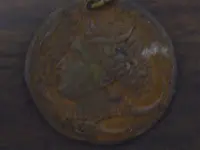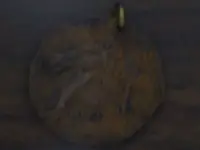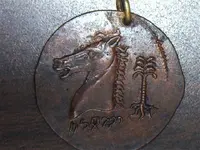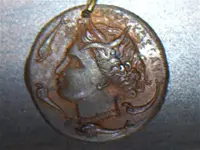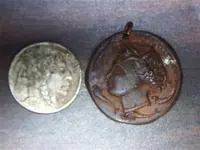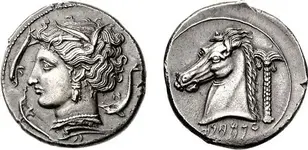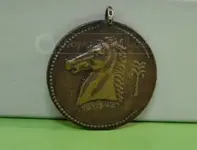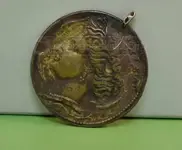I got this coin in an auction from Goodwill. The obverse is actually more attractive than the picture appears. Only paid $50 for it since I was assuming it was probably fake, but it was interesting. Then I found this thread.
I do have actual ancient Greek coins, so I can make a few partially educated observations. The coin appears to be bronze or similar, but may have had a gold wash at one time. The coin does not appear to be struck, as a real ancient would be, but the surfaces are very even, not porous like cast coins frequently are. The craftsmanship is excellent, and equivalent to the work on the original Siculo-Punic coins that it resembles. However, it is not an exact copy, as the lettering is different, and I did not see in any of my books or online any genuine coins any that have lettering behind the head of Persephone, for example. If the coin is original work, it is extraordinarily well done. Also, it is odd that there are so many varities given the number of Farley coins found. There are no tree roots on the palm tree on mine, for example. The geographic spread of the various finds is also puzzling. I would guess that some craftsman made these coins quite a few years ago, but why would be a mystery.

